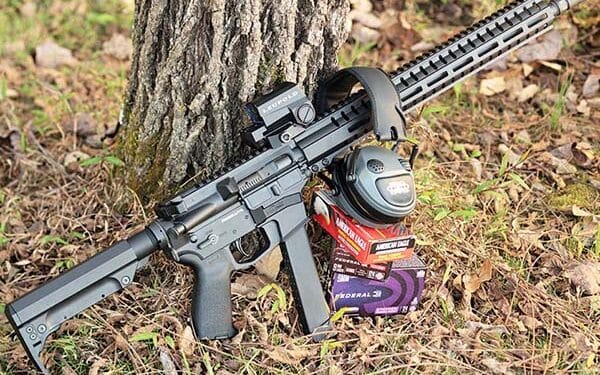Story & Photography by Oleg Volk
As urbanization progresses, fewer informal ranges are available for practice. Of indoor ranges, not all have rifle-rated backstops. Of shooters, not all care to deal with the overwhelming noise and concussion of centerfire rifles indoors. Those two constraints, along with the relatively effective sound suppression of subsonic pistol caliber cartridges, have popularized the 9mm AR-style carbine. About 3 years ago, CMMG improved on the concept originated with Colt submachine guns of the 1980s with their Guard, Banshee and now Resolute lines of 9mm carbines.
CMMG carbines utilizing a radial-delayed blowback mechanism have been continuously evolving since 2017. Retarding the opening by friction of angled surfaces dates back to the original Thompson and Blish lock, but the CMMG design works much better. This approach permits the bolt carrier to be much lighter than plain blowback breechblocks. The backs of the rotating bolt lugs are angled to match similarly angled cuts in the barrel extension, allowing the bolt to slide out of battery once the pressure has dropped. Compared to the gas operation, this design is simpler and less dependent on the load; although additional bolt weights and stronger buffer spring are required for suppressed operation. For unsuppressed operation, a standard carbine weight buffer rather than the heavier 9mm buffer is sufficient, which makes racking the gun easier. Another plus of delayed blowback is lower residual pressure by the time the breech face clears the ejection port opening, which outputs less smoke by the shooter’s face.
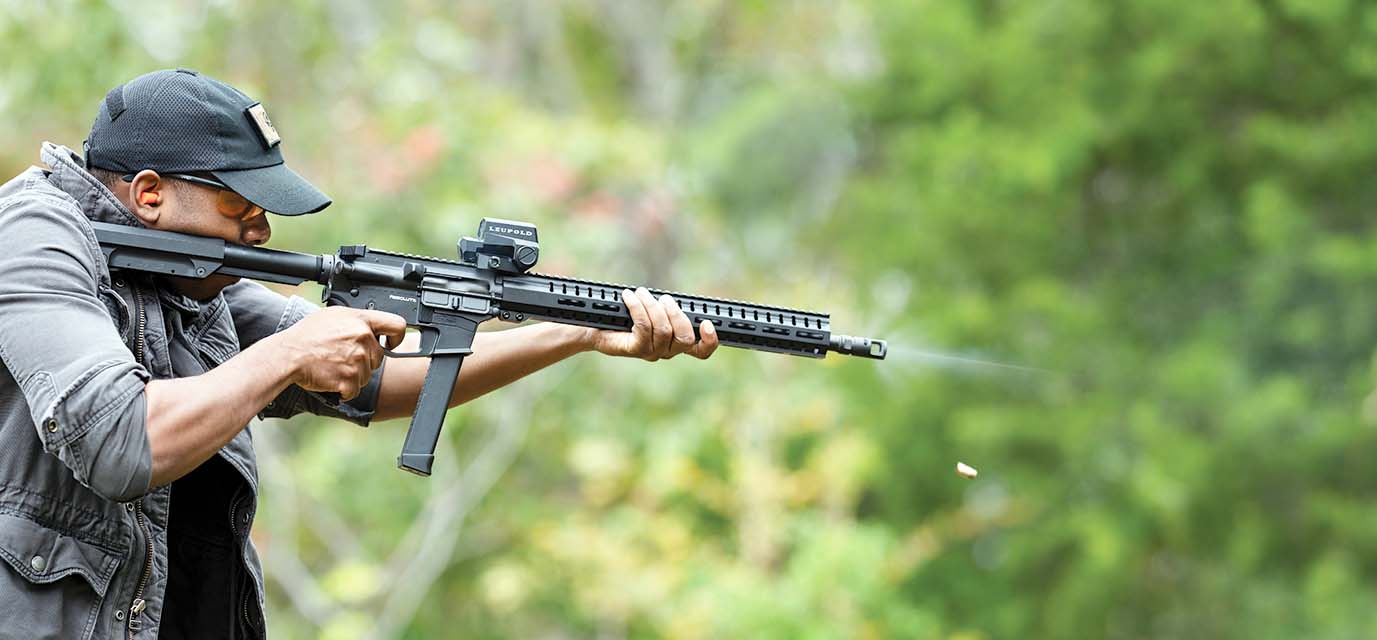
Three Grades
The manual of arms resembled the full-size AR-15, which is the main point of the pistol caliber carbine (PCC). Three grades, 100, 200 and 300 series are offered. The high-end 300 series has all the enhancements: ambidextrous charging handle, ambidextrous sling plate and ambidextrous safety lever. A crisp two-stage Geissele trigger helps practical accuracy. For the three-gun shooter, especially the Trooper class who carry all guns with them through all stages, an all-aluminum RipStock™ is included. This CMMG exclusive opens to full length with no unlocking motions necessary, saving a second or so. The textured aluminum buttplate provides a non-slip connection for the shoulder. The underside of the buffer tube specific to RipStock has spaces for a set screw, limiting the length of pull if desired. For use in a cold or hot climate, I would recommend gluing a Neo prene pad to the top of the stock for a more comfortable cheekweld.
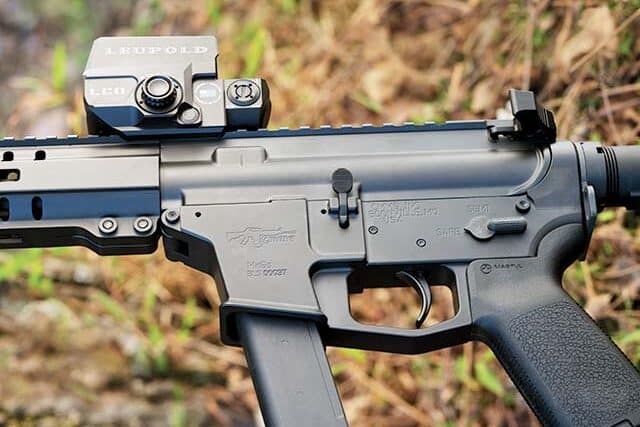
Resolute 300 also comes with an aggressive and fairly effective muzzle brake. The plainer 100 series has a standard AR trigger, an A2 flash hider and a simple M4 buttstock on a standard buffer tube, along with a MIL-standard grip instead of a Magpul. Both feature lightweight 15-inch M-Lok handguards. The simpler rifle is a couple of ounces lighter and about $500 cheaper, but competition shooters would probably prefer the more fully featured variant. The mag drops free in both, and the mag well is nicely beveled for rapid reloads. I would have preferred a slightly heavier, more prominently fenced magazine release. The reduction of recoil impulse by the patented CMMG mechanism even makes the narrow aluminum buttplate comfortable enough for extensive range sessions.
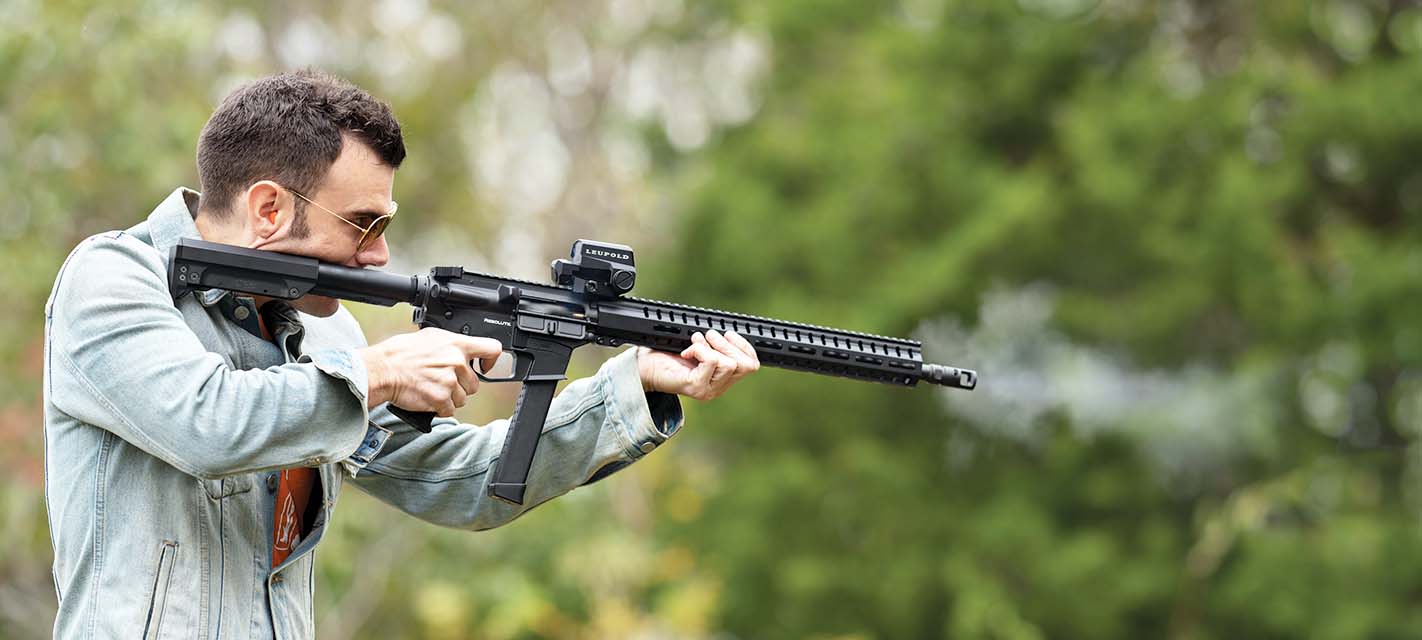
The rest of CMMG’s standard features, like a beveled mag well and properly radiused and chamfered forms, are present in all models. Thanks to the delayed blowback design, the recoil is traditionally minimal even for a PCC. The guns come standard with one 33-round GLOCK magazine, a welcome improvement on the aftermarket 17-rounders included by most other makers. Given the velocity increase of light bullets from the pistol barrel length to the carbine length is 100fps to 250fps, the 9mm becomes a more potent defensive tool. With subsonic ammunition, the gain is small, less than 50fps, but the reduction of the muzzle blast and the elimination of flash make PCC a much easier weapon to handle under come defense conditions.
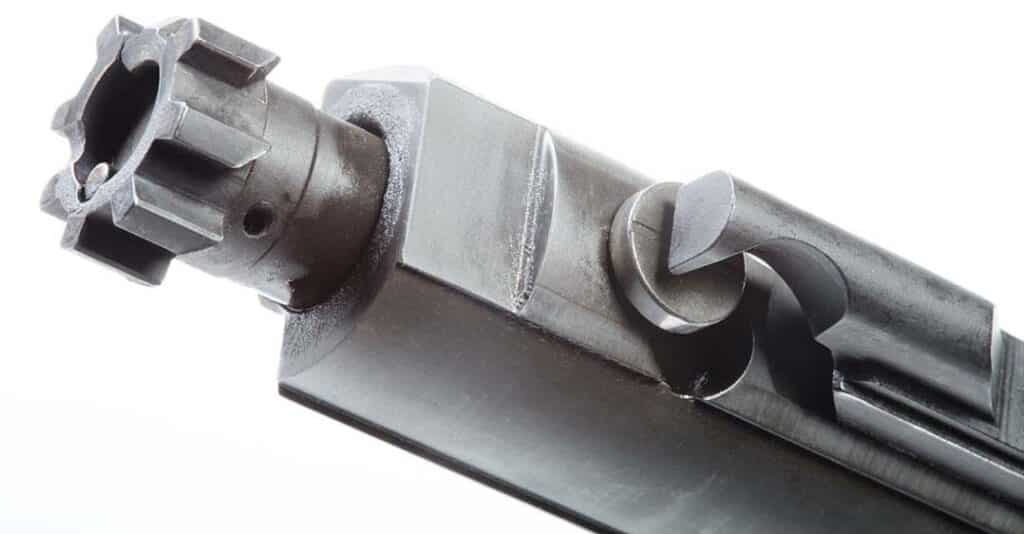
I’ve used CMMG carbines and AR-style pistols in the past, they have invariably ran reliably and delivered excellent accuracy. Both 9mm and .45ACP Guard carbines shot 2MOA, which is very respectable for pistol rounds. My experience with the Resolute 300 made me wonder if the gun was damaged by a prior reviewer. After about 200 rounds, the rifle started failing to eject. The culprit was predictably a kinked ejector spring, easily replaced. However, in looking at very asymmetric soot on ejected casings, this author had to wonder if damage was done to the chamber as well, as obturation seemed very inconsistent. Good accuracy and high reliability have long been my baseline expectations with CMMG. Anything other than that gets handled very quickly by their tech support.

The best group I got from the Resolute was 4MOA, with Winchester 147-grain subsonic JHP, American Eagle 147-grain subsonic TMJ and Seismic 185-grain HP, while Winchester White Box 124-grain FMJ was all over the place with 6MOA. The results from the 100 series were more in line with the expectations, despite the basic MIL-SPEC trigger.

185-grain Seismic and 147-grain Winchester Suppressed both came in at 3MOA. That’s unusual, as most PPCs shoot smaller groups with bullets under 115 grain. Resolute, on the contrary, does better with heavier bullets. 124-grain Federal Syntech Match and 100-grain G2 Research Civic Duty HP shot around 4MOA. The White Box ball was all over the place again. Centers of groups for various loads differed considerably, up to 5 inches diagonally. For serious use, it would be best to pick one load and stick to it. This accuracy level is plenty good for PCC matches that seldom go beyond 70 yards. At 25-yard indoor ranges, 3MOA translates into a maximum of ¾ inch from the point of aim.
Putting considerable amount of ammunition through these carbines made me greatly appreciate the two magazine loaders employed for filling GLOCK mags. The great “coffee mill” MagPump loader took a little time to set up masterfully but made filling 30-rounders quick and easy. It also works for several other brands of magazines. The tiny, single-purpose hand-loader from American Speedloaders, LLC, only works with GLOCK-type mags but requires no set-up time at all. Drop-in a single round, press the mag against the base and done! Resolute proved very accepting of a wide variety of ammunition, from steel-cased ball to lightweight frangibles to the heaviest of subsonics to exotics with jagged machined leading edges all fed reliably.
Great Speed
In sum, both variants of Resolute would be a good fit for any sport where speed counts. While my friend Bill Treanor, a highly ranked competitive shooter, was firing the 100 series carbine, another friend walked up asking: “Who brought the submachine gun?” That’s just a quick trigger finger and a CMMG carbine, pal!



